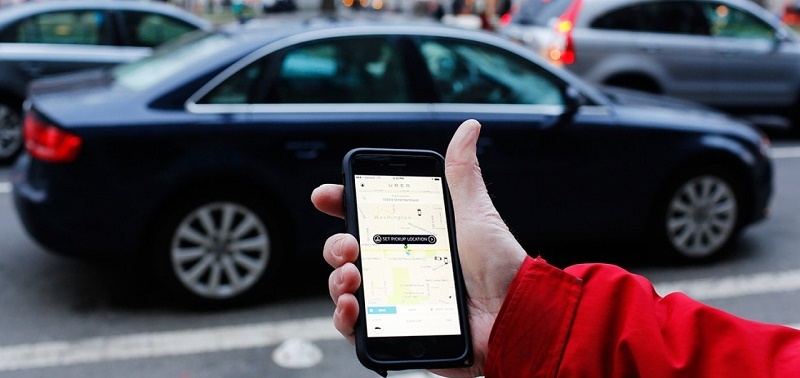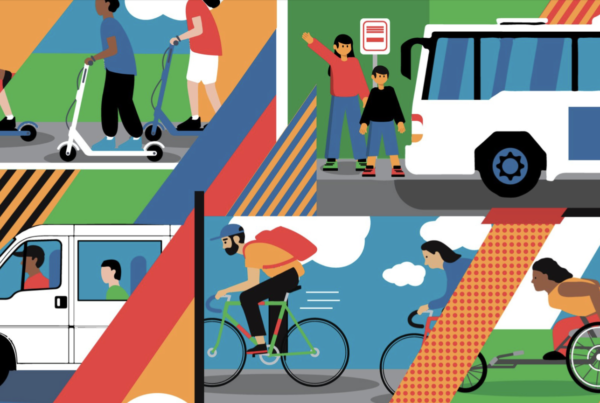The American Public Transportation Association (APTA) has released new research conducted by the Shared-Use Mobility Center (SUMC) that suggests public transit and ridesourcing services such as Uber and Lyft are largely complementary, with each serving different trip types but working together to enhance urban mobility and decrease reliance on private autos.
While some have previously suggested that public transit and ridesourcing offer reciprocal benefits – most notably the providers themselves – this research represents the first independent, multi-city evaluation to support these claims. It also sheds new light on the relationship between transit and shared mobility overall, and suggests those who use the widest variety of modes realize the greatest benefits.
“Together, shared mobility and transit create a robust network of choices that can help reduce household transportation costs, lessen congestion and greenhouse gas emissions, and make it possible to live well without owning a car,” said Sharon Feigon, the study’s principal investigator and executive director of SUMC, a national public-interest organization working to foster collaboration in shared transportation. “These findings further underscore the need for cities and private providers to work together to address transportation gaps and expand access to jobs, opportunity and a better quality of life for all residents.”
Drawing from a wide variety of sources, including interviews with public officials, a survey of shared mobility users and a first-of-its-kind analysis of publicly available Uber data in seven cities, SUMC’s research analysis includes several notable findings, such as:
- Ridesourcing services are used most frequently for social trips between 10 p.m. and 4 a.m., times when public transit runs infrequently or is not available. Meanwhile, transit is most in demand on weekdays during the morning and evening rush. It also appears that relatively few people use ridesourcing to commute on a regular basis, and that ridesourcing is more likely to substitute for automobile trips than public transit.
- The more people use shared modes, the more likely they are to use public transit, own fewer cars, and spend less on transportation overall. Compared to survey respondents who had not used any shared modes beyond public transit, those who were experienced with new forms of shared mobility reported owning nearly half a car less—1.5 versus 1.05 cars per household. Vehicle ownership was even lower among those who used the widest variety of modes across all trip types. These “supersharers” reported owning only 0.72 cars per household and also claimed the greatest transportation cost savings.
- As shared mobility continues to grow in significance, public entities should engage with the private sector to ensure that benefits are widely and equitably shared. Lower-income households have much to gain from wider availability of shared mobility. The option to drive rises with income, and at three times the rate of every other cohort, respondents in the analysis’s lowest-income group reported that if their top mode was not available, they simply would not make the trip.
- Both the public and private sectors are eager to collaborate to improve paratransit service using emerging approaches and technology. While a number of regulatory and institutional hurdles complicate partnerships in this area, technology and business models from the shared mobility industry can help drive down costs, increase service availability and improve rider experience.
The report also includes recommended actions that public entities can take to help further expand the benefits of shared mobility, such as mapping local mobility assets and needs to direct investment; supporting the development and adoption of shared mobility information standards; ensuring data reciprocity from the private sector; and coordinating multiple agencies and modes toward common mobility goals.
The newly released research—which was distilled from a larger forthcoming study that SUMC conducted on behalf of the Transportation Research Board’s Transit Cooperative Research Program (TCRP)—is based on interviews with more than 70 officials, a survey of 4,500 shared mobility users, and analysis of Uber and transit data completed in part by querying Uber’s application programming interface (API) in the seven study cities of Austin, Boston, Chicago, Los Angeles, San Francisco, Seattle and Washington, D.C. More information on SUMC’s methodology is available in the report’s appendix. The full TCRP study, which will include additional findings and information, is scheduled to be released later this spring.
The full research analysis is available online here.




